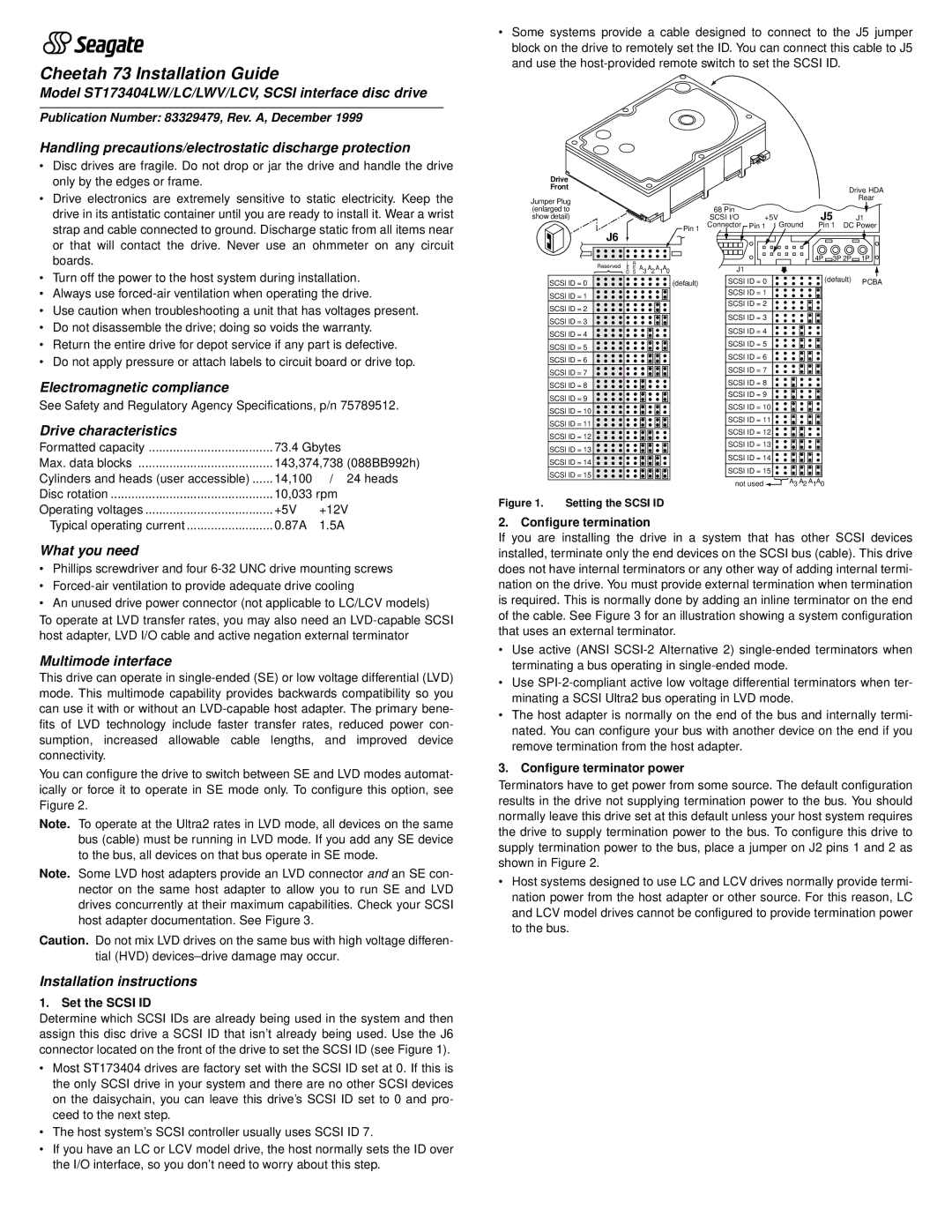ST173404LC, ST173404LWV, ST173404LW, ST173404LCV specifications
The Seagate ST173404LCV, ST173404LW, ST173404LWV, and ST173404LC are hard disk drives designed for enterprise and high-performance server applications. These drives are notable for their advanced features, high storage capacities, and reliability, making them suitable for data-intensive operations in various industrial settings.One of the main features of these Seagate drives is their impressive storage capacity, with the ability to handle large volumes of data. The ST173404LCV and ST173404LW models provide substantial space, making them ideal for applications that require significant data storage, such as transaction processing, data warehousing, and cloud computing. Their 7,200 RPM rotational speed ensures that data access and retrieval times are minimized, resulting in improved overall system performance.
These drives utilize the SATA (Serial ATA) interface, which enables fast data transfer rates, compatible with modern motherboards and storage systems. The ST173404LW series, including the LW and LWV variants, is particularly designed for enhanced data security and integrity. Features such as error correction codes and data integrity checks ensure that the data stored is both reliable and accessible, reducing the risk of data loss due to corruption or failure.
In terms of technology, these drives leverage Seagate's advanced PowerChoice technology to optimize power consumption during idle periods, thus extending the lifespan of the hard disks while contributing to energy efficiency in data centers. The drives are also equipped with advanced thermal management capabilities, allowing them to perform reliably even under high-temperature environments, which is essential for enterprise applications.
The build quality of the ST173404 series is critical, with Seagate implementing rigorous testing processes and high-quality materials to enhance durability and reduce the probability of failure. This makes them a preferred choice for businesses that require continuous and stable operation, even under heavy workloads.
In summary, the Seagate ST173404LCV, ST173404LW, ST173404LWV, and ST173404LC hard disk drives are designed to meet the demanding needs of enterprise storage solutions with their large capacity, fast performance, and robust reliability. With the innovative technologies embedded within them, these drives represent a solid investment for companies looking to enhance their data management capabilities.

